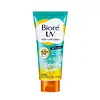What's inside
What's inside
 Key Ingredients
Key Ingredients

 Benefits
Benefits

 Concerns
Concerns

 Ingredients Side-by-side
Ingredients Side-by-side

Water
Skin ConditioningAlcohol
AntimicrobialEthylhexyl Methoxycinnamate
UV AbsorberLauryl Methacrylate/Sodium Methacrylate Crosspolymer
Ethylhexyl Triazone
UV AbsorberDimethicone
EmollientC12-15 Alkyl Benzoate
AntimicrobialTitanium Dioxide
Cosmetic ColorantDiethylamino Hydroxybenzoyl Hexyl Benzoate
UV FilterBis-Ethylhexyloxyphenol Methoxyphenyl Triazine
Skin ConditioningDimethicone/Vinyl Dimethicone Crosspolymer
Skin ConditioningButylene Glycol
HumectantXylitol
HumectantDextrin Palmitate
EmulsifyingDipropylene Glycol
HumectantHydrated Silica
AbrasiveHydroxyethylcellulose
Emulsion StabilisingGlycerin
HumectantGlyceryl Stearate
EmollientCetyl Alcohol
EmollientPolymethylsilsesquioxane
Vinyl Dimethicone/Methicone Silsesquioxane Crosspolymer
Triethoxycaprylylsilane
Propanediol
SolventAcrylates/C10-30 Alkyl Acrylate Crosspolymer
Emulsion StabilisingGlyceryl Behenate
EmollientParfum
MaskingPolysorbate 60
EmulsifyingAluminum Hydroxide
EmollientPotassium Hydroxide
BufferingStearic Acid
CleansingStearyl Alcohol
EmollientSorbitan Distearate
EmollientAgar
MaskingPolyvinyl Alcohol
Isoceteth-20
EmulsifyingSodium Methyl Stearoyl Taurate
CleansingStearoyl Glutamic Acid
CleansingAminomethyl Propanol
BufferingSodium Stearoxy Pg-Hydroxyethylcellulose Sulfonate
Arginine
MaskingBHT
AntioxidantGlutamic Acid
HumectantCeratonia Siliqua Gum
EmollientDisodium EDTA
Maltose
MaskingWater, Alcohol, Ethylhexyl Methoxycinnamate, Lauryl Methacrylate/Sodium Methacrylate Crosspolymer, Ethylhexyl Triazone, Dimethicone, C12-15 Alkyl Benzoate, Titanium Dioxide, Diethylamino Hydroxybenzoyl Hexyl Benzoate, Bis-Ethylhexyloxyphenol Methoxyphenyl Triazine, Dimethicone/Vinyl Dimethicone Crosspolymer, Butylene Glycol, Xylitol, Dextrin Palmitate, Dipropylene Glycol, Hydrated Silica, Hydroxyethylcellulose, Glycerin, Glyceryl Stearate, Cetyl Alcohol, Polymethylsilsesquioxane, Vinyl Dimethicone/Methicone Silsesquioxane Crosspolymer, Triethoxycaprylylsilane, Propanediol, Acrylates/C10-30 Alkyl Acrylate Crosspolymer, Glyceryl Behenate, Parfum, Polysorbate 60, Aluminum Hydroxide, Potassium Hydroxide, Stearic Acid, Stearyl Alcohol, Sorbitan Distearate, Agar, Polyvinyl Alcohol, Isoceteth-20, Sodium Methyl Stearoyl Taurate, Stearoyl Glutamic Acid, Aminomethyl Propanol, Sodium Stearoxy Pg-Hydroxyethylcellulose Sulfonate, Arginine, BHT, Glutamic Acid, Ceratonia Siliqua Gum, Disodium EDTA, Maltose
Butyl Methoxydibenzoylmethane
UV AbsorberHomosalate
Skin ConditioningOctocrylene
UV AbsorberEthylhexyl Salicylate
UV AbsorberC12-15 Alkyl Benzoate
AntimicrobialAloe Barbadensis Leaf Juice
Skin ConditioningBenzyl Alcohol
PerfumingCarbomer
Emulsion StabilisingCitric Acid
BufferingTocopheryl Acetate
AntioxidantParfum
MaskingHydroxyacetophenone
AntioxidantHydroxyethylcellulose
Emulsion StabilisingPEG-15 Cocamine
EmulsifyingPEG-40 Stearate
EmulsifyingPhenoxyethanol
PreservativeWater
Skin ConditioningTriethanolamine
BufferingCera Alba
EmollientButyl Methoxydibenzoylmethane, Homosalate, Octocrylene, Ethylhexyl Salicylate, C12-15 Alkyl Benzoate, Aloe Barbadensis Leaf Juice, Benzyl Alcohol, Carbomer, Citric Acid, Tocopheryl Acetate, Parfum, Hydroxyacetophenone, Hydroxyethylcellulose, PEG-15 Cocamine, PEG-40 Stearate, Phenoxyethanol, Water, Triethanolamine, Cera Alba
Ingredients Explained
These ingredients are found in both products.
Ingredients higher up in an ingredient list are typically present in a larger amount.
C12-15 Alkyl Benzoate is made up of Benzoic Acid and long chain alcohols. It has a low molecular weight.
C12-15 Alkyl Benzoate is an emollient and texture enhancer. Due to its solubility, it is often used in sunscreens to help evenly distribute active ingredients.
As an emollient, C12-15 Alkyl Benzoate helps soften and hydrate your skin. Emollients create a film on your skin that traps moisture within.
This ingredient has been reported to cause eye irritation.
Learn more about C12-15 Alkyl BenzoateHydroxyethylcellulose is used to improve the texture of products. It is created from a chemical reaction involving ethylene oxide and alkali-cellulose. Cellulose is a sugar found in plant cell walls and help give plants structure.
This ingredient helps stabilize products by preventing ingredients from separating. It can also help thicken the texture of a product.
This ingredient can also be found in pill medicines to help our bodies digest other ingredients.
Learn more about HydroxyethylcelluloseParfum is a catch-all term for an ingredient or more that is used to give a scent to products.
Also called "fragrance", this ingredient can be a blend of hundreds of chemicals or plant oils. This means every product with "fragrance" or "parfum" in the ingredients list is a different mixture.
For instance, Habanolide is a proprietary trade name for a specific aroma chemical. When used as a fragrance ingredient in cosmetics, most aroma chemicals fall under the broad labeling category of “FRAGRANCE” or “PARFUM” according to EU and US regulations.
The term 'parfum' or 'fragrance' is not regulated in many countries. In many cases, it is up to the brand to define this term.
For instance, many brands choose to label themselves as "fragrance-free" because they are not using synthetic fragrances. However, their products may still contain ingredients such as essential oils that are considered a fragrance by INCI standards.
One example is Calendula flower extract. Calendula is an essential oil that still imparts a scent or 'fragrance'.
Depending on the blend, the ingredients in the mixture can cause allergies and sensitivities on the skin. Some ingredients that are known EU allergens include linalool and citronellol.
Parfum can also be used to mask or cover an unpleasant scent.
The bottom line is: not all fragrances/parfum/ingredients are created equally. If you are worried about fragrances, we recommend taking a closer look at an ingredient. And of course, we always recommend speaking with a professional.
Learn more about ParfumWater. It's the most common cosmetic ingredient of all. You'll usually see it at the top of ingredient lists, meaning that it makes up the largest part of the product.
So why is it so popular? Water most often acts as a solvent - this means that it helps dissolve other ingredients into the formulation.
You'll also recognize water as that liquid we all need to stay alive. If you see this, drink a glass of water. Stay hydrated!
Learn more about Water